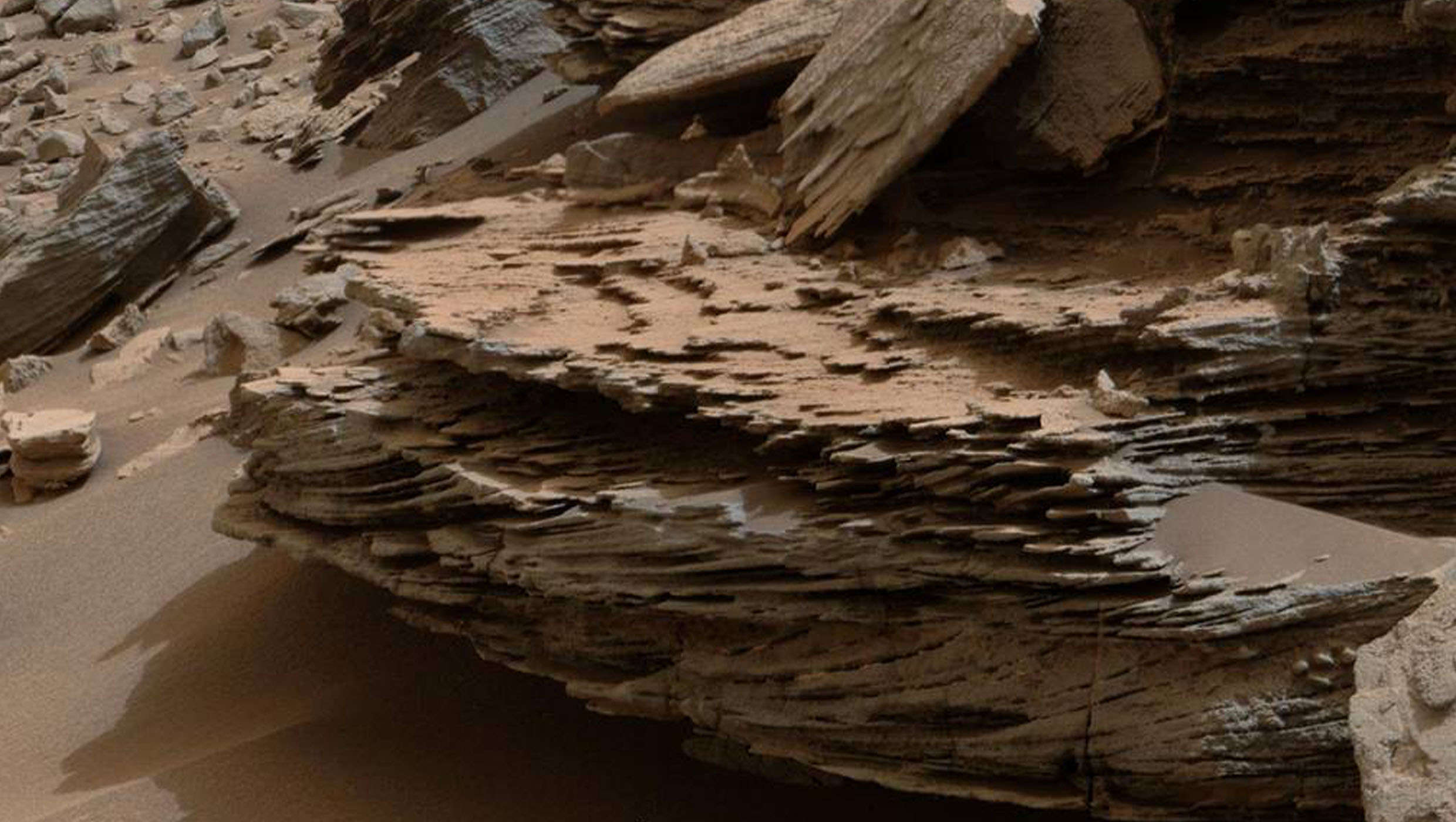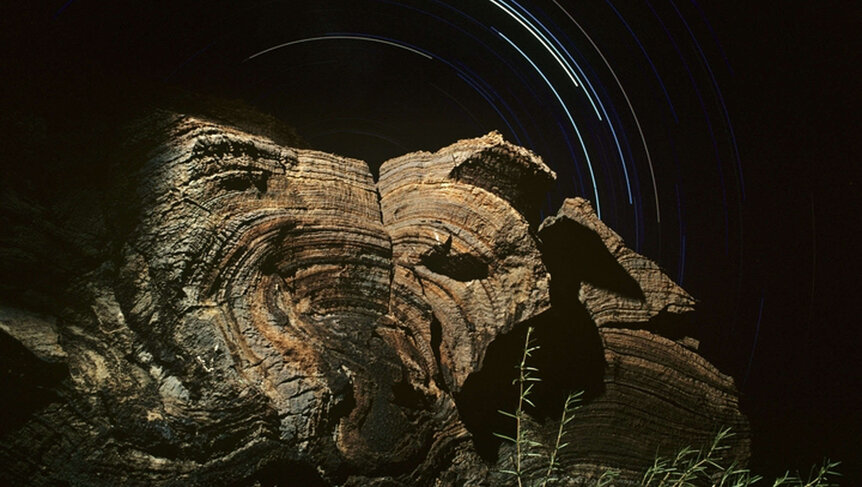Create a free profile to get unlimited access to exclusive videos, sweepstakes, and more!
Is there life on Mars…at least in fossil form?

To answer the iconic question David Bowie first posed wearing a Neptune-blue suit and matching eyeshadow in 1971, we still don’t know whether there is anything that is or was ever alive on Mars. Soon, we might.
NASA’s Perseverance Rover could finally find out with the PIXL (Planetary Instrument for X-ray Lithochemistry) device at the end of its 7-foot arm. PIXL which has an AI brain and is designed to take precision X-rays that could potentially give away signatures of ancient microbial life that might have once thrived on the frozen desert we now know as the Red Planet. When Perseverance finally touches down on February 18, 2021 it will start scouring what otherwise looks like a rocky wasteland for signs of life that might have spawned billions of years ago.
"Based on what we know about the geological similarity between Earth and Mars, we would expect life in general if it ever originated/was established on Mars to be similar to microorganisms here on Earth," Perseverance program scientist Mitch Schulte told SYFY WIRE. "Because microorganisms of various types are responsible for the formation of stromatolites on Earth, we could expect them to be similar on Mars. The Perseverance rover that is on its way to Mars right now will be landing in an area that once held an ancient lake, and we see from orbital data that there were likely shoreline deposits similar to what we deduce for those where we see ancient stromatolites on Earth."
PIXL is attached to a hexapod that kind of looks like an oversized robotic insect. Next to its ultra-precise X-ray beam, the six-legged hexapod connects PIXL to the robotic and is powered by AI that will tell it where it exactly where it is aiming its camera and laser. Its legs will then make extremely precise movements towards that site—precise as in 100 microns. That’s just twice the width of a human hair. It will then work tirelessly for up to eight or nine hours to take multiple measurements in the search for chemicals that may or may not be signatures of life.
PIXL will crawl out to search for fossilized microbes at night, since the temperature on Mars soars and plunges by over 100 degrees Fahrenheit each day, which could make the metal of the robotic arm it is attached to expand and contract. Martian temperatures tend to be much less erratic at night, and it's going to take some time for it to seek out a place where things could actaully fossilize (if anything did at all).
"Conditions necessary for fossilization include not just where microorganisms can live (which were probably fairly widespread on early Mars, as long as there was liquid water and energy sources) but where they could be preserved," Schulte said. "This is one of the reasons for going to an area like Jezero Crater, which was an ancient lake in which a delta was deposited. Rapid burial of material would provide a greater chance of preserving the structures and some organic material through time. Earth and Mars are somewhat similar geologically, and that would mean it likely that conditions existed on both planets for life to start. "
So what exactly will it be looking for? Stromatolites are the most likely type of fossilized life on Mars. On Earth, there are bacterial mats that can be found near hot-water vents at the bottom of the ocean, which release jets of water heated by magma in the mantle. It is the heat from these jets that make the areas around them hotbeds for life in an otherwise cold and bleak world. Fossils of stromatolites can be distinguished from the rock they are embedded in because they have been warped over time. Sediment would gradually settle between dead layers of bacteria that reacted with calcium carbonate in salt water and fossilized into limestone over the aeons.
Stromatolites are considered to be the first evidence of life on Earth. Whether they even exist on Mars remains to be seen. Since they have also been found near hot springs on this planet, their existence probably would not have depended on Mars ever having had vast bodies of water. Perseverance and ESA’s Rosalind Franklin (aka ExoMars) rover, which is scheduled to land a week later, will both seek out stromatolites and any other fossilized evidence of life. The Franklin rover’s core drill can delve almost 7 feet deep. Perseverance has a shorter coring mechanism but room for over 40 samples. Both rovers will be able to analyze the samples they collect onsite.
So...aliens?
"When we think about life existing on Mars, we generally think about Earth-like microbial life," said Schulte. "We think that the rise of multicellular life and animals on Earth required the presence of molecular oxygen (on Earth derived as a byproduct of oxygenic photosynthesis by microorganisms) as an oxidant energy source. If photosynthesis did not ever begin (either on Earth or Mars), it is unlikely that multicellularity would have developed."
If there is any surviving water that has been protected from the cosmic radiation that has blasted the surface, there is speculation that there might even be live microbes hiding in the alien dirt. Maybe Bowie’s question will finally get an answer.



























